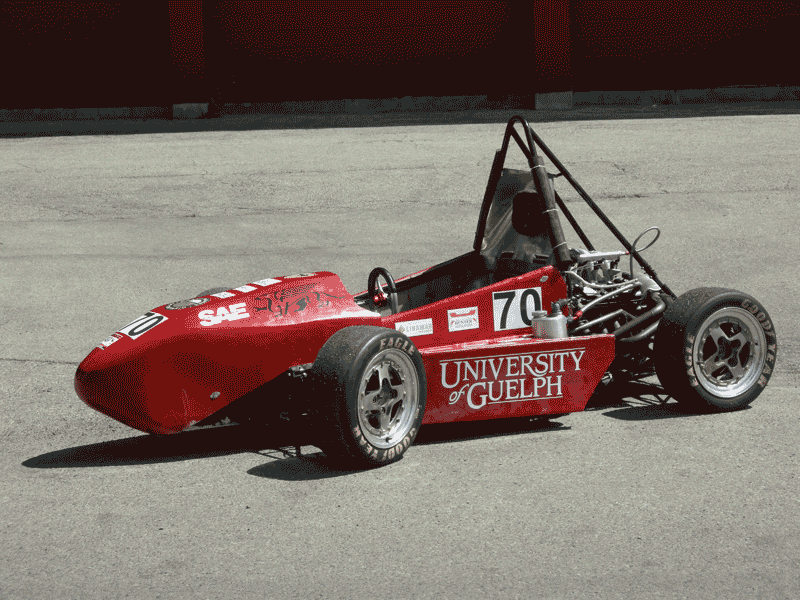Need for speed meets sustainability
STUDENT DESIGNED RACE CAR GOES GREEN
for most students, September means it’s back to the books. But for members of the University of Guelph’s Gryphon Racing team, it’s also back the drawing board to design their leanest, greenest, race car yet!

THE GRYPHON RACING TEAM’S FORMULA-STYLE RACECAR.
As annual competitors in the Formula Society of Automotive Engineers (SAE)?student design competition, the Gryphon Racing team sets out to design, build and test a prototype race car against other international student teams. Though they attend many events throughout the year, the student run club from Guelph focuses on the Formula SAE series held in Michigan which is the biggest and longest running series organized by the SAE. Last year’s team aimed to set itself apart from the crowd by incorporating renewable resources into their design. Ryan de Boer, Gryphon Racing’s intake/exhaust technical leader, says the decision naturally builds on the school’s reputation for sustainable innovation.
“We wanted to make ourselves more distinctive and the University of Guelph is already known for green initiatives,” says de Boer.
making it ‘green’
The Gryphon Racing project brings together students from a variety of fields and allows them to apply textbook theories to real work experiences. The competition is intended to test the student cars as if a fictional manufacturing company has contracted them to develop a small Formula-style race car for the non-professional weekend autocross racer. The team has been participating in the competition since 2003 and each previous model entry was built with fibre glass and petroleum-based resin body panels.
But the car that they designed for the 2011 competition became the first car to use a ‘green’ resin for both the body panels and intake manifold, made by team sponsor AOC. De Boer says that their work mimics the same trend major car companies are following as they continue to include more natural fibres and sustainable products.
“People are more inclined to demand green products so it made the judges happy,” says de Boer. “Each year we want to get more and more green products into the car.”
Next year, the group hopes to expand their ‘greening’ even further by incorporating soybean based engine oil.
overcoming challenges
Going green did get the team some of the attention they had hoped for but presented a new set of challenges for the competitors as well. Each prototype race car must prove itself a potential production item in both the ‘dynamic’ and ‘static’ event categories. During the acceleration, skid pattern, endurance, short circuit and fuel consumption tests, the more sustainable materials used by the Gryphons Racing team performed as well as their conventional counterparts. In the ‘static’ categories, the team also fared well, gaining points in their business presentation as the judges were impressed with the use of biomaterials and maintaining neutral in the design category. Unfortunately, the team did lose points in the cost report category.
“The cost report was the challenge since biomaterials aren’t produced in such high volumes as conventional materials and are therefore more expensive. Since the competition is suppose to be a pretend company, justification has to be made for increased material costs. The ‘green’ banner may attract new customers, but the question is if enough new customers would be attracted to offset the cost of the biomaterials,” says de Boer.
Despite the setback in the cost category, de?Bouer remains optimistic about the team’s ability to continue to improve the design for 2012. The team remains committed to their use of sustainable materials and they already plan to run the next model on a bio-based engine fuel made from soy.
“This year, our team was mostly second year [students] and mainly it was a learning year,” he says. “We’re expecting big things next year.”
In 2011, the team included Murray Lyons, Shiwley Pauls, Andres Lopez, Mickey Brydges, David Desroches, Evan Giehler, Marco Conflitti, Addison Rayner, Robert Maxwell, Mohit Chauhan and Ryan de Boer. The faculty advisor of the team was Associate Professor John Runciman. Grain Farmers of Ontario was the team’s biggest sponsor this year. •






















